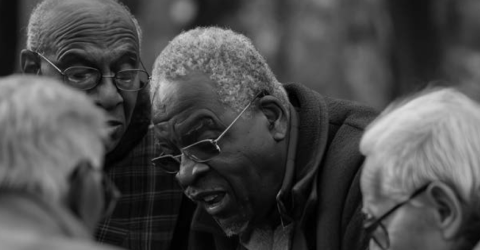A fresh survey by the NYC’s Department of Aging, known as a Service Needs Assessment, has determined what older city residents say they still need to live out their golden years healthily and happily in 2025. The results are sobering.
Among other things, a startling percentage of respondents reported that they struggle with affording bills, as well as with securing access to proper housing and less isolated environments. The most survey respondents came from Brooklyn and Queens (both 29 percent respectively), although Manhattan residents made up 20 percent of survey respondents.
According to the survey, one in four respondents said that they didn’t have stable housing, with one in three reporting “at least one limitation impacting their ability to leave home.” For example, many older residents said that their homes lack wheelchair accessibility or grab bars.
A stunning 41 percent of respondents said they struggled to afford “at least one” household bill. Around 16 percent of respondents struggled with rent or mortgage payments, 15 percent struggled to buy food, and 11 percent struggled to buy necessary medication.
More than one in five respondents also said that they are “not socializing as often as they would like,” with 17 percent reporting “high” levels of loneliness. Surveyors determined that 18 percent of respondents had “possible anxiety and/or depression,” with 30 percent indicating that they wanted to engage in volunteer work that did not currently do.
Furthermore, one out of every eight respondents indicated that they have experienced age discrimination at work, with 12 percent indicating they’d been victims of ageism in interpersonal relationships. Around 15 percent indicated that they had been victims of elder abuse after the age of 60.
During a media roundtable on the survey convened by the Aging Dept., Commissioner Lorraine Cortés-Vázquez said that the agency has been “data-driven” since its founding in the 1970s. She pointed out that older New Yorkers, or senior citizens, currently comprised 20 percent of the city’s population. “In a few short years, we’ll be 25 percent,” Cortés-Vázquez said.
The commissioner added that New York City’s older population is very diverse, explaining that the new needs assessment was conducted in an array of languages: English, Spanish, Chinese, Arabic, Haitian Creole, Bengali, Russian, Polish, Korean, French, and Urdu.
The survey consisted of 35 questions, plus 13 optional ones. Internal working groups, “external stakeholder” reviews, and secondary literature reviews were all conducted in the lead-up to the survey. A total of 8,600 people responded, whether older adults or their caregivers.
Indeed, Cortés-Vázquez said that many people may not explicitly realize that they’re caregivers, and that it extends far beyond people who pursue care work as a profession. For example, aging adults often take care of an older parent, as they feel that it is their responsibility to do so; managing the finances of an older relative or shopping for them is certainly care work, as commonly understood.
Cortés-Vázquez called this the “invisible workforce” of New York, and described such work as both “rewarding” and “stressful” in equal measure–with the level of stress surely only mounting as the basic aging needs outlined in the survey aren’t addressed.
